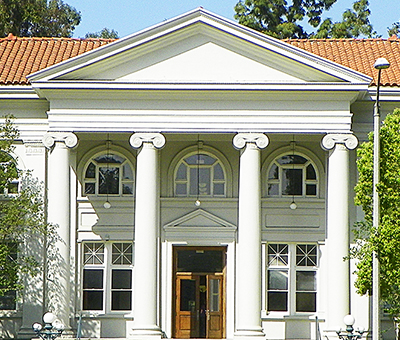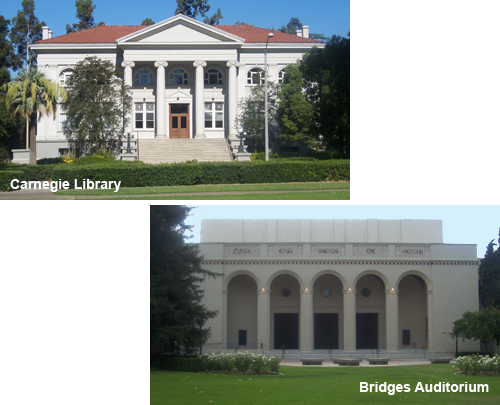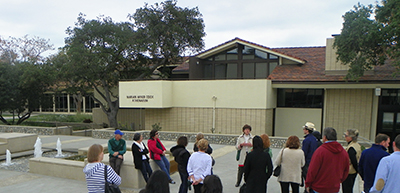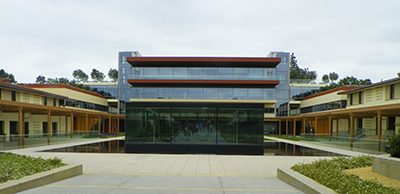Self-Guided Tours
THE CLAREMONT COLLEGES
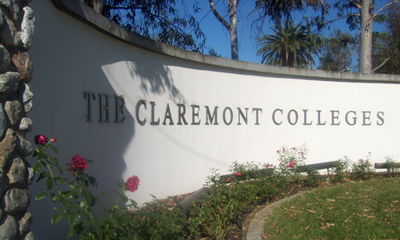 Take a brief self-guided tour of The Claremont Colleges online: Pomona College |
Founded in 1887, Pomona College is a premiere liberal arts college with a focus on the arts, humanities, social sciences and natural sciences.
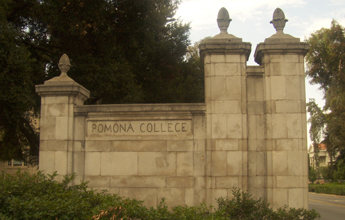
16 – Bridges Hall of Music (1915)
150 East Fourth Street (East of College Avenue)
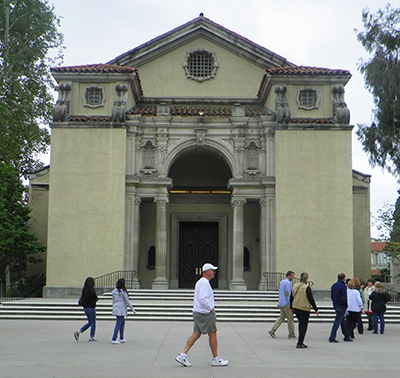
This concert hall, designed by Pasadena architect Myron Hunt, was a gift of Mr. and Mrs. Appleton Bridges of San Diego, whose daughter died in 1907, a year before her graduation from Pomona College. Hunt chose a style that included classical elements in a Roman Basilica exterior and an interior noted for its beautifully painted wood-beamed ceiling reflective of the Mexican heritage of this area. Hunt went on to lay out the plan for the Pomona College campus.
17 – Bridges Auditorium (1931)
450 N. College Way
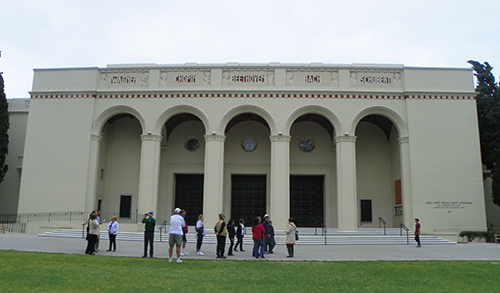
This Art Deco concert hall, called “Big Bridges” to distinguish it from Bridges Hall of Music, was a second gift from the family of Mabel Shaw Bridges. For many years it was the largest concert hall east of Los Angeles, seating 2,500. It is the eastern anchor of Marston Quadrangle, one of the beautifully landscaped green spaces that mark all of the Claremont Colleges. This auditorium is shared by all the Colleges and is used for some theatrical productions, graduations, and concerts. Phone (909) 621-8032.
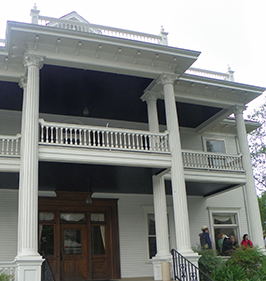 |
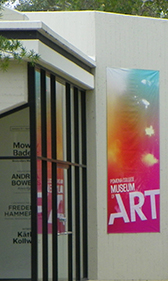 |
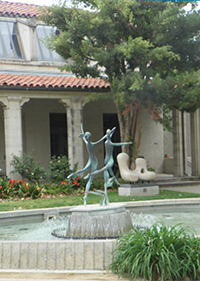 |
Founded in 1925, Claremont Graduate University is a private, graduate-only institution which offers small class sizes.
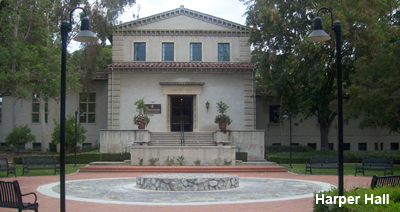
18 – Harper Hall (1932)
150 East Tenth Street
This imposing building was designed by Gordon Kaufman as the administrative headquarters and classroom building for Claremont Graduate University. It is named after Jacob Harper; advisor of Ellen Browning Scripps, who donated the money for this building and most of the money for the land which has allowed all the newer campuses to be built. Just south of this building is a fountain and pergola dedicated to James Blaisdell, founder of the Claremont Colleges plan. Each column of the pergola bears a quotation of Blaisdell’s illustrating his vision and world view. Its bubbling fountain and shady bench offer a nice spot to rest and relax.
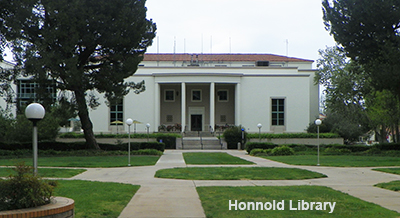
19 – Honnold/Mudd Library (1952)
800 N. Dartmouth Avenue • 909-621-8150
This is the major facility shared by all the Claremont Colleges and the Graduate University. The original library building was designed by Gordon Kaufman who also designed Scripps College and Hoover Dam. The library was expanded and remodeled in the 1960s and 1980s. Named for the mining engineer and philanthropist, William Honnold, it now holds 1.8 million volumes and over 6,000 periodicals. If you walk by the east side of the building after dark, you can see seven floors of books through the large window. That area is often called the “great stack.”
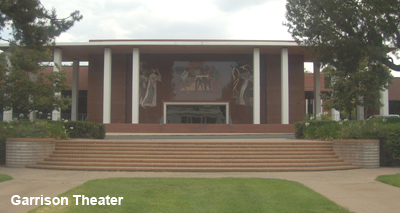
20 – Garrison Theater (1963)
Tenth Street Opposite the Honnold Library
The distinctive mosaics on the facade of this 750-seat auditorium were created by Millard Sheets, art professor at Scripps and the Graduate University, who is best known for the tile mosaics he designed for Home Savings and Loan. He designed this building with David Underwood. The facility is shared by all the colleges.
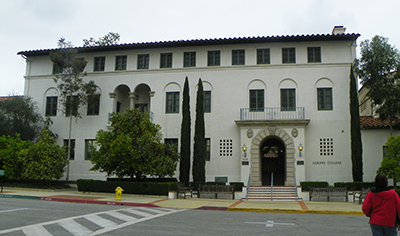 |
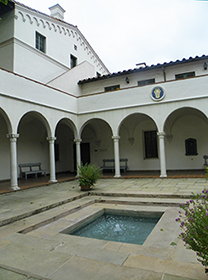 |
1030 Columbia Way
Balch Hall is the formal entrance to Scripps and its administrative center; designed by architect Sumner Hunt to fit into the overall plan of the campus, which was designed by Gordon Kaufman. The informality of this Mediterranean style is matched by the easy movement from interior to exterior spaces in this building with its beautiful courtyards.
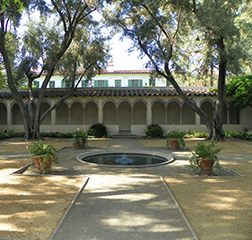 |
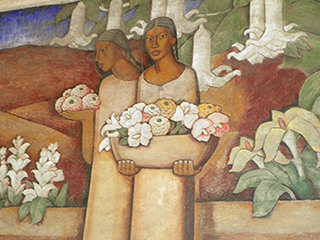 |
22 – Margaret Fowler Garden (1937)
In the Center of the Scripps Campus
This small, walled garden contains olive and orange trees and interior arcades, one of which is covered by an enormous wisteria vine. On one wall is a fresco painted in 1946 by Mexican muralist Alfredo Ramos Martinez, who died before its completion. The garden was a gift in memory of Margaret Fowler; a local philanthropist who started a rehabilitation program for children with nerve and brain damage at her home, called Casa Colina.
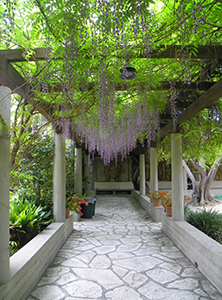 |
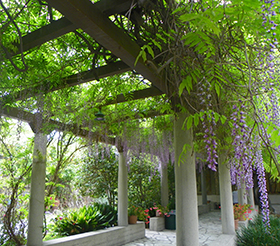 |
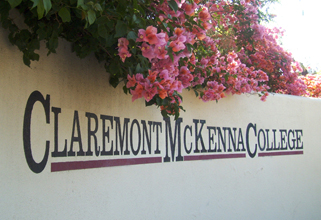
850 Columbia Avenue
A unique program at CMC gave rise to this very attractive and much used modern structure designed by Quincy Jones. Believing that students would benefit from a more personal and informal interaction with professors and distinguished visitors to the campus, CMC built this athenaeum, which offers a dining room and meeting rooms for small group encounters and lectures that are often open to the community at large.
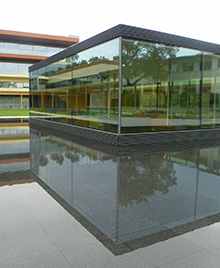 |
|
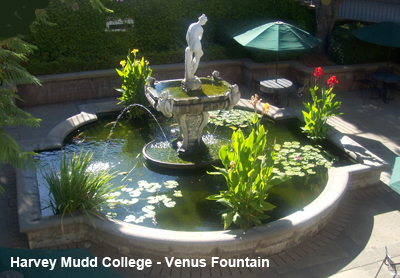
25 – Venus Fountain
Outside Galileo Hall, on the Western End of the Harvey Mudd Campus
Here is a sculpture brought to Claremont from Italy by Thomas Church, who landscaped the Harvey Mudd campus. It is by Giovanni Bologna (1552-1608), a major sculptor of the Italian Renaissance. The fountain is a symbol of the commitment of this engineering and scientific college to a foundation in the humanities and social sciences.
On Mills Avenue; Accessible from the Eastern Terminus of Twelfth Street Scott Hall was named for Russell Pitzer’s second wife, Ina Scott Pitzer, and was for many years the central administrative building for the campus, with classrooms and faculty offices. Many of these functions have been moved recently to the Eli Broad Center.
Northeast of Scott Hall
This craftsman bungalow was once set in the middle of an orange grove on Harrison Avenue in Claremont, and was moved to the Pitzer campus in 1977 as a warm, inviting campus center and coffee house for students and faculty. The landscaping around the building is outstanding, as faculty and students have planted a small grove, a desert garden, and a native habitat.


